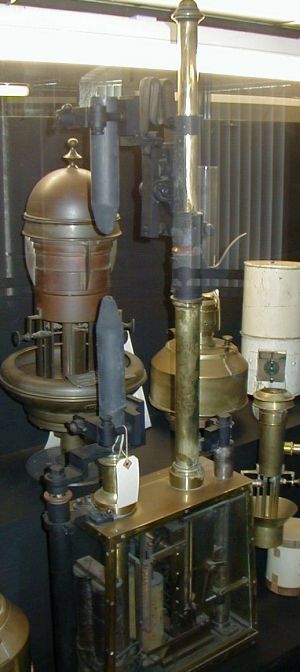
The World Lighthouse Hub
H18: Carbon Arc Light
Q: How was electricity first used in lighthouses?
The first application of electricity in lighthouses was in the creation of an intensely bright spark - a bit like creating lightning to order. To do this, an electrical generator was used to create a high voltage that was applied to two carbon rods known as electrodes. If the voltage is sufficiently high, the air between the two electrodes breaks down and a bright spark results, just as when a cloud that is highly charged with static electricity discharges it to the ground in a thunderstorm.
The first uses of electricity in lighthouses were at Dungeness, South Foreland and Souter Point in England. The physics of electricity was largely discovered by Michael Faraday in England in the first half of the nineteenth century, and by the mid 1860s experimental generating machines, coupled to carbon arc light sources were being installed in these locations.
The photograph below shows a carbon arc light source. The two large black graphite (carbon) electrodes are mounted vertically in the centre of the photograph, with their rounded ends facing each other. (The rounding is to get a better spark from one to the other.)

Two carbon (graphite) arc electrodes across which a high voltage produces an intense white light.